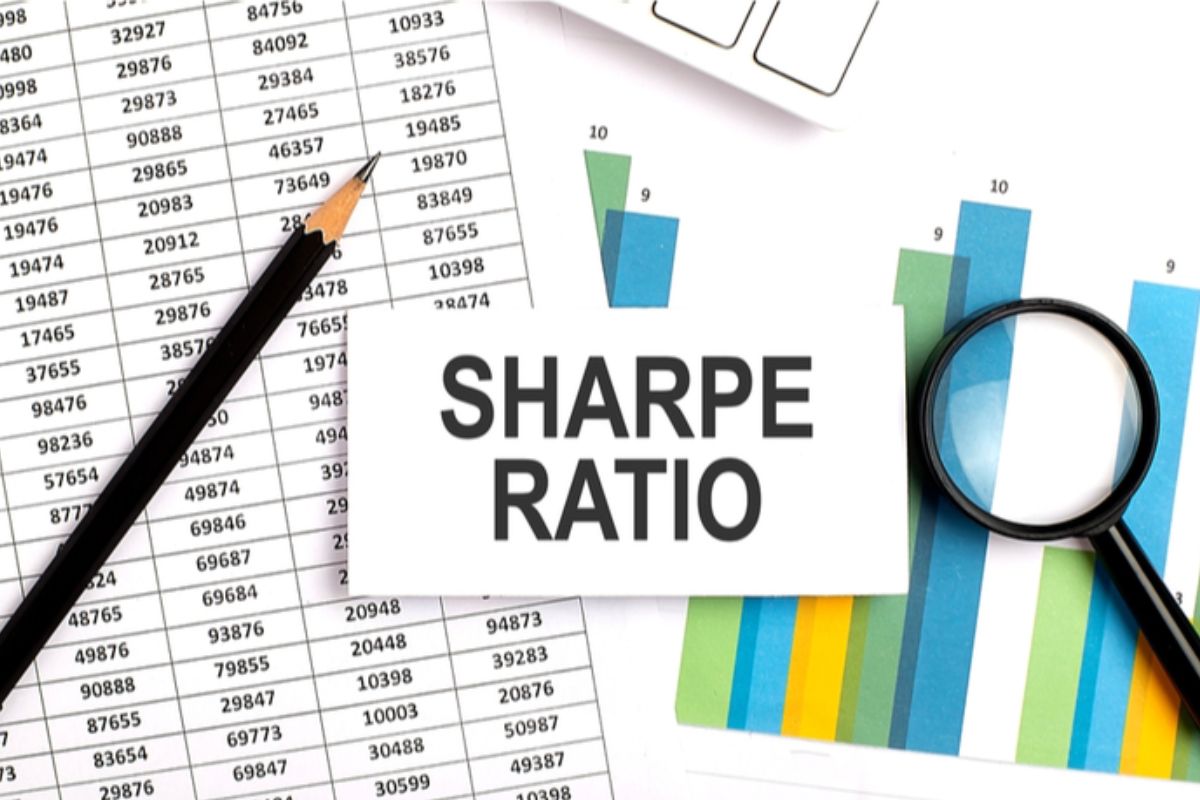Investors and analysts frequently struggle with the intricacies of the financial markets, trying to quantify and compare the performance of various investment vehicles. Among the most logically appealing tools for this endeavor is the Sharpe ratio. Conceived by Nobel Prize winner William F. Sharpe, this measure provides investors with information regarding risk-adjusted returns of an investment portfolio, a single asset, or a fund. For fund managers, the Sharpe ratio is a key metric that makes it easier to compare risk and return.
What is the Sharpe Ratio?
The Sharpe ratio is a measure of an investment’s performance after correcting for its risk. Simply put, it measures how much excess return you are getting for the additional volatility that you bear from investing in a riskier asset. The formula for the Sharpe ratio is:
\[\text{Sharpe Ratio} = \frac{R_p – R_f}{\sigma_p}\]
Where:
– \( R_p \) = Expected portfolio return
– \( R_f \) = Risk-free rate
– \( \sigma_p \) = Standard deviation of the portfolio’s excess return
For the Indian financial market, the risk-free return can be the yield on government bonds or treasury bills, which are generally lower-volatility and stable-yielding instruments.
How to Calculate Sharpe Ratio: An Illustrative Example
Assume a fund manager is analyzing a mutual fund that has historically returned 16% per year. At the same time, the average return on a risk-free investment in a 10-year Indian government bond is 5% annually. The mutual fund has a standard deviation of returns of around 12%.
\[\text{Sharpe Ratio} = \frac{16\% – 5\%}{12\%} = \frac{11\%}{12\%} \approx 0.917\]
This Sharpe ratio of around 0.917 implies that for each unit of risk assumed, the investor is rewarded with 0.917 units of extra return.
Interpretation and Significance
The greater the Sharpe ratio, the better the risk-adjusted return. This ratio is especially useful for fund managers who have to compare funds or portfolios with varying risk profiles. For example, if another fund has a Sharpe ratio of 0.7, then it would mean that the first fund (Sharpe ratio = 0.917) is providing superior risk-adjusted returns, given the same risk-free rate and measurement period.
But a note of caution here: the Sharpe ratio assumes a normal distribution of returns, which in the real world may not always be the case, particularly in unstable or unpredictable markets.
Why Fund Managers Use the Sharpe Ratio
To fund managers, the Sharpe ratio is not just a measurement of performance but also a means of communicating with investors. Investors are constantly in search of funds that deliver the highest return on a specific amount of risk, and the Sharpe ratio condenses that rich information into a transparent, easy-to-understand number. The ability to measure performance, risk-adjusted, enables fund managers to market differentiation in a competitive market.
In addition, the Sharpe ratio’s simplicity is a double-edged sword: simplicity provides clarity, but it can also mask subtle risk factors such as tail risk or liquidity risk, which the figure does not measure. Therefore, fund managers supplement this metric with other analytical tools to achieve an overall risk determination.
Limitations of the Sharpe Ratio
While the Sharpe ratio is generally useful, it does come with caveats. At times of turbulence in the markets, standard deviation, as a risk measure, may prove inadequate considering asymmetric factors of risk. Secondly, the measurement also postulates that the risk-free rate over the duration for which measurement is being considered is constant, an assumption perhaps not always being made in such evolving economies as India.
Conclusion and Disclaimer
Sharpe ratio continues to be a core part of the financial analyst’s and fund manager’s toolkit because of its ability to capture the essence of risk-adjusted performance in a simple, understandable number. Nevertheless, as with all financial measures, it is not to be used alone. Fund managers and investors need to keep in mind all those variables that might affect investment performance, especially in a market as diversified as India’s where economic, political, and global forces may present unanticipated risks or opportunities.
Disclaimer: The article presents a basic framework for comprehending the Sharpe ratio and must not be used as investment advice. Investors must carefully analyze the advantages and disadvantages, market conditions, and individual financial circumstances before investing in the Indian financial market.
Summary
Sharpe ratio is a key risk-adjusted return measure, used extensively by fund managers to measure and compare investment performance. By calculating the excess return for every unit of risk, it provides a normalized means to compare different assets or funds. In an Indian context, the Sharpe ratio assists investors in interpreting complex financial performances concerning the risk-free rate, which in turn is normally Indian government bonds.
Although the ratio provides a concise and perceptive perspective on performance, it is not without limitations, including its presumption of normally distributed returns and possible neglect of other risk categories. Investors and fund managers must stay alert and combine the Sharpe ratio with more encompassing financial analysis in order to make effective decisions. Finally, it’s crucial for investors considering trading in the Indian financial market to carefully weigh all potential risks and benefits.











